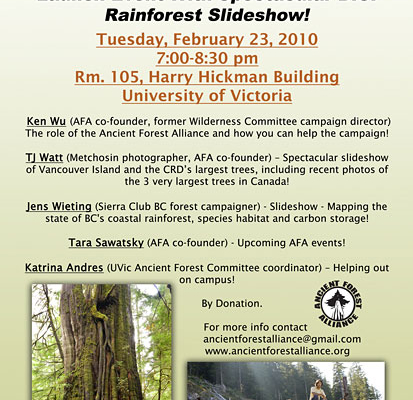
Ancient Forest Alliance – Launch Event!
Enough is Enough! Saving our Last Ancient Forests and Ending Raw Log Exports - Find out about the new organization and its campaign!

TJ Watt Exclusive Interview Canadian Landscape Environmental Photographer
TJ Watt is a professional photographer living in the city of Victoria on Vancouver Island, BC. Born and raised in the rural town of Metchosin, he carries with him a strong passion for the outdoors, the environment, and life itself.
Environmental organization launches VIRY REAL (Vancouver Island Rainforest therapy – Real Earth Appreciation Lessons) for distraught Avatar film-goers
A Canadian environmental organization has established a 3 Step Program designed to cure thousands of movie-goers who complain about sinking into a depression in their drab, Earthly lives after watching scenes of spectacular alien rainforests and wildlife in James Cameron’s hugely popular film, “Avatar”.
